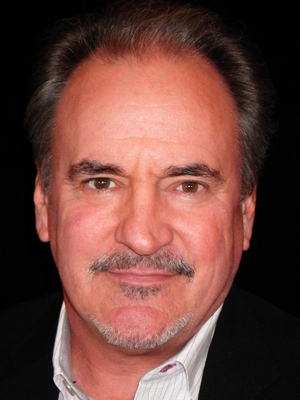- Luis Martinez, Security Solutions Consultant for Advant Solutions Inc., a Houston, Texas-based security integrator that specializes in servicing the multi-family building industry.
- Dan Doyle, Senior Manager of Sales for Military & Senior Housing for sponsor company dormakaba.
- Dale Mathias VP of Multi-Housing Sales for Multi-housing for sponsor company dormakaba.
- Bobby Welliver, CTS SME ESS ISS, National Sales Manager for Multi-housing at sponsor company dormakaba.
How PropTech is changing the game for apartments, condos, student living and more (sponsored by dormakaba)
When it comes to the multi-family housing market, old-style security thinking typically based access control design around the idea of fortifying exterior entrances without necessarily depending on electronic access.
Modern access solutions require a more holistic approach that takes security to the next level and includes electronic access control (EAC) products that keep residents safe while offering capabilities like using a phone as a credential, PIN code capabilities at common/amenity doors, and the use of traditional credentials all at the same time.
These technology differentiators are desired by both property owners/managers as well as residents. In addition, security technology must integrate with the many property management technologies available in the marketplace.
For this exclusive technology roundtable sponsored by dormakaba, multi-family housing is segmented into six distinct environments: market-rate apartments, privatized student housing, senior living, military housing, subsidized housing, and condominiums.
Mathias: There is definitely overlap. We define MDU as a building where three or more apartments exist. Smart buildings can exist everywhere for competitive advantages, an enhanced resident experience, and similar situations where the developer, property owner, or builder wants to achieve specific property management goals that require a technology integration. You could argue that some of the first PropTech solutions were electronic locks. Today, it includes property management systems, energy management, community portals, parking, intrusion alarms, visitor management and more. Technology has come a long way and will continue to expand its reach within a property.
Welliver: PropTech isn’t one size fits all. The best solutions are built with specific input from the developer, property management team and past/present and future residents. In addition to single buildings where multiple residences exist, MDU also includes duplexes or triplexes – all controlled through a single database. Manufacturing solutions specialists and integrator’s commonly work together to help define what the exact PropTech path within MDU looks like

- Dan Doyle, Senior Manager of Sales for Military & Senior Housing, dormakaba
Mathias: Each of the six verticals identified has their own unique use cases for smart technology. For example, market rate, privatized student housing and condominiums may want to expand PropTech in order to provide a full spectrum of features and access. These properties want to go a little further and add technology features that transcend access control; they will include a community portal for communications and events. They want to provide the residents the ability to use their smart phones to do many things such as remote visitor entry, access property community news and events, pay their rent, pay association fees, manage energy consumption via HVAC controls, and other features. PropTech brings together many different systems to one touchpoint for residents through an app. The key is to be able to tailor control and access as needed.
Doyle: Independent senior living is quickly evolving to integrate technologies as Baby Boomers – who are technology users – age and move into these communities. We are entering the era of tech-savvy generations who are already using smart apps for daily living and expect to continue that as they age. For older residents who may be tech averse, PropTech allows their families – who are usually advanced digital users – to support their loved ones as they age by integrating with outside vendors such as physical therapists and other health care service providers. The military has been slower to adopt PropTech.

- Dale Mathias, VP of Multi-Housing Sales, dormakaba
Martinez: Today, access control is more than just a method of securing property and ensuring authorized residents and personnel can get into areas where they have access. Optimal performance is dependent on pairing the right access control system with the right door hardware and properly maintaining both. The goal is to create an environment that allows residents to access designated areas in many ways with fobs or mobile credentials as they choose. Entry apps can create an ecosystem for the residential community by allowing them to perform many actions such as security and managing guest and delivery entries. These entry control solutions keep residents safe but provide some liberties that the property owner and staff are comfortable with.
Recently, we have seen more collaboration between entry control solutions and third-party software providers. More companies have open SDK and API to enable more features and compatibility. I expect to see more connected systems in the future to enable the smooth transfer of data or information between systems. This will provide more integration with day-to-day devices such as using a phone for entry and controlling devices within a unit [like HVAC]. Residents will continue to expect more integration between the technologies they use whether it is within the property where they live or other properties.
Martinez: We see three frequent problems when it comes to access system performance:
- Maintenance, where systems must be inspected periodically to make sure that hardware, software, and safety features remain fully functional;
- Poor quality door hardware. Pairing great access control systems with low quality hardware can compromise performance longevity. Pairing systems with inadequate hardware can cut short how long the systems operate or the length of time the door will be fully operational.
- Using solutions not catered to end-user needs. In multi-housing, we see many solutions sold that don’t cater to end user needs. Sometimes customers pay for features that aren’t useful for residents of staff. One of our multi-housing customers actually installed a robust commercial system meant for an airport! In multi-family and other market sectors, it is important to work with trusted, product-agnostic integrators or directly with manufacturer’s reps with experience in more than one access control system

- Bobby Welliver, CTS SME ESS ISS, National Sales Manager for Multi-housing, dormakaba
Welliver: The key to incorporating technology is to plan ahead for scalability that can support upgrades without compromising the overall security of a property, ultimately delivering technology options like fobs, transmitters, BLE or PIN code – to name a few – that seamlessly work together through one main system GUI. To help plan for future integrations in the design/build phase of new construction or remodel projects, it is important to look at each access point individually and apply the right mix of access control that maximizes resident safety and streamlines operational efficiencies for ownership and management teams.
Martinez: We tell our customers, first and foremost, to ask a lot of questions. Technology and access control can be scary and sound complicated. Sometimes, it is a topic we don’t want to dive into or explore as much due to its intricacies; however, it is critical to work with trusted partners who have expertise in the space. Also, maintain a holistic perspective and remember that the primary function of any system is to provide security.
Some companies come to us with an idea of what they want, but they don’t look at the whole picture. They may be excited by specific feature sets but miss the security or longevity aspects. Our industry has seen a huge shift in recent years. Security used to be mostly about not letting people in. Today, we need to accommodate package and food delivery which means we let people into a property more than ever.
Mathias: One way to look at this is to transcend the sale. Come together to enlist the support of all partners who will part of the integration. On the access solutions side, we often are put in the role of liaison to bring everyone together. We like to be in that position because it helps to make sure that the right PropTech MDU solutions are conceived and delivered for the best guest experience possible. We advise all of our customers – from integrators to property owners/managers to builders and developers – to proceed with caution. Take the time needed to properly vet solutions and providers to ensure success
